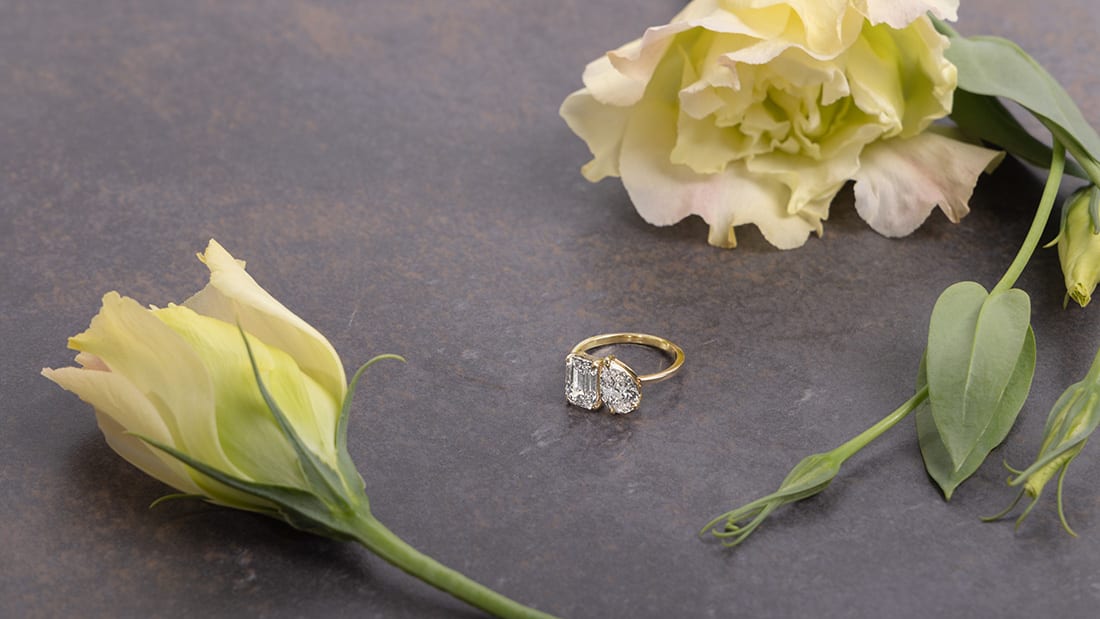实验室培养的钻石的可持续性大放异彩
作者:LISA KLEIN
Diamonds may be a girl’s best friend, but mining for them is no friend to the environment or the communities that are affected by them.
Ethical issues with mined diamonds have led to an increasing interest in versions of the timeless gemstones that come from another source – the lab.
“The lab-grown diamond industry is rapidly growing,” said Mona Akhavi, CEO of VRAI, one such producer based in Los Angeles.
“Lab-grown diamonds have not only been praised for their environmental and ethical practices but are becoming the diamond of choice for many in the fashion and entertainment industries, further cementing their place in the diamond industry,” she said.
Engaging gems
In an overall push for sustainability in housing, travel and products, especially amongst millennials, jewelry has not been an exception. The acceptance of manmade diamonds has been steadily increasing, with the sales to match.
According to a MVI Marketing study, 70 percent of millennials said they would consider buying a lab-grown diamond in 2017.
A 2021 survey from The Knot found that almost one in four engagement rings sold had a manmade center stone, up 11 percent over the two years prior.
By March, sales of engagement rings featuring a manmade stone surged 63 percent over the year-ago period in 2021.
“Perceptions around lab-grown diamonds have rapidly changed over the past several years, as consumers continue to increase their spending power and prioritize sustainability in their spending habits,” Ms. Akhavi said.

Murky mining
Naturally occurring diamonds formed millions and billions of years ago about 100 miles below the Earth’s surface in the upper mantle.
The perfect combination of intense heat and pressure allowed carbon atoms to crystallize into diamonds before ancient volcanic eruptions brought them closer to the surface, where humans discovered them and a centuries-long love affair began.
In the 20th and 21st centuries, however, numerous ethical concerns have been raised over mined diamonds, from poor working conditions and child labor to environmental destruction to their profits funding war.
“Mined diamonds pass through many hands until they reach the customer, and this convoluted process makes it impossible to understand with certainty their impact on the local communities and the environment that surrounds the diamond mines,” Ms. Akhavi said.
Crystal clear
One solution to these problems that does not involve forgoing diamonds altogether is to manufacture rather than mine them.
Using machines to replicate geology’s diamond-creation process, carbon can be successfully transformed into shining examples of the coveted gems.
The HPHT – high pressure high temperature – process places a diamond “seed,” or small sliver of existing diamond, among graphite carbon and adds 1.5 million pounds per inch of pressure to a temperature of 1500 Celsius.
VRAI uses newer technology, CVD (chemical vapor deposition), that only needs to heat a chamber filled with carbon-rich gas and a diamond seed to 800 Celsius.
“From there, atoms begin to attach to one another and grow, layer by layer, until it is a unique and one-of-a-kind, jewelry-grade gemstone,” Ms. Akhavi said. “Following that process, another small piece of diamond is sliced off and used to repeat the same process all over again for the next diamond.”

Sustainable stones
Going lab-grown bypasses all of the concerns that come with mined diamonds – for every carat VRAI grows, the company saves 143 pounds of carbon dioxide, 2,011 ounces of air pollution and 250 tons of moved earth – and with an end product that has no less sparkle.
“Our lab-grown diamonds are chemically, optically and physically identical to earth-mined diamonds,” Ms. Akhavi said. “The only differences between lab-grown and mined diamonds are provenance and price.”
Lab-grown diamonds do indeed come with a lower price tag: they can be up to 73 percent lower in cost to the consumer.
One potential cost coming out of the lab is that the process of creating diamonds uses a significant amount of energy.
VRAI’s solution is its certified carbon neutral foundry in Wenatchee, Washington, which uses 100 percent renewable hydropower from a nearby river. Plans for expansion have the same requirements.
THANKS TO VRAI and several other diamond growers, the industry’s ethical future looks bright indeed.
According to industry analyst Paul Ziminsky, lab-grown diamond producers are predicted to make $3.9 billion-worth of lab diamonds in 2025, up from the $2 billion in 2021 – a testament to their growing popularity.
“It’s important that VRAI produces ethical and sustainable jewelry to establish a standard of transparency and accountability across the jewelry industry, in which brands prioritize environmentally conscious practices and fair working conditions,” Ms. Akhavi said.
“We hope that VRAI serves as an example of how jewelry brands do not have to sacrifice sustainability for quality or consumer demand.”
Read more about lab-grown diamonds in the latest issue of Luxury Portfolio magazine.






